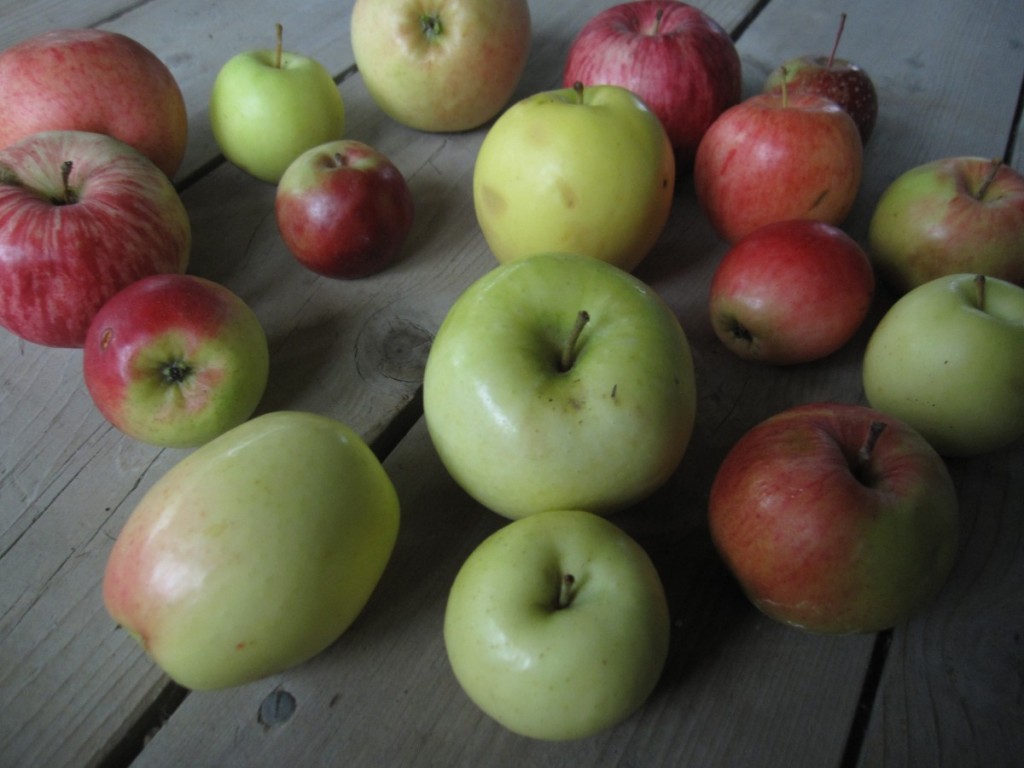Here’s an interesting twist on the whole native, non-native discussion… sometimes the introduction of new species of plants can trigger the evolution of new species of insects! Sometimes, in fact, a whole bunch of them, as is described in the coolest new research paper I’ve read in ages (Actual paper, behind a pay wall) (A brief Summary)

Basically, there is a fruit fly, Rhagoletis pomonella, native to Eastern North America that lays its eggs on the ripe fruits of native hawthorns. It is part of a whole group of species of flies that each go after a different kind of fruit – blueberries, snowberries and dogwoods each have their own species of closely related fly. When Europeans arrived and introduced non-native apple trees, the hawthorn fly started laying eggs on the apples as well, and got the name of apple maggot. But here’s the crazy bit: The hawthorn flies didn’t just expand their diet, they actually evolved to a new race, a new species in the making, that live exclusively on apples.
These flies have very brief life spans, so the adults must emerge at exactly the right time or there won’t be ripe fruit to lay their eggs on. But apples and hawthorns ripen nearly a month apart, so the apple targeting flies have evolved to emerge several weeks earlier than the original hawthorn flies. In addition to diverging in time of emergence, the two types of flies have changed their preferences in smells. The original fly is attracted to the smell of hawthorns, and avoids the smell of apples, while the new flies show the exact opposite behavior, each homing in on their target host, be it new or old.
The final piece of these two types of flies becoming two different species is that they each now mate only on the fruit of their tree of choice. This is important, because now the apple and hawthorn flies don’t interbreed due to their preference of mating location, and being a reproductively isolated group is the most commonly accepted definition of a species. Now the two types of flies will continue to diverge, as the lack of interbreeding means more and more genetic differences between the two populations will build up over time.
All of this is very cool, and has been long understood. Here’s the EVEN COOLER part from this new research: The divergence of one kind of fruit fly into two is cascading through the ecosystem. There are three species of parasitioid wasps that lay their eggs on the hawthorn fruit fly that have diverge into new forms that specialize in the new apple fruit fly. Just like the fruit flies, the timing of their life cycle, their preference and avoidance of the smell of the ripe fruit, and their mating habits have shifted to create different apple and hawthorn specific races. So where there was one fruit fly and three wasps, the introduction of the European apple has lead to the evolution of one additional fruit fly, and three new wasps.
I’m not sure what import this has, if any, in the ever raging native-versus-exotic debate in horticulture, but it sure is cool – the evolution of new species happening right before our eyes.
Joseph Tychonievich
Great story!
How do the four North American apple species fit into this story? Are apple maggots only pests to the Eurasian domestic apple and North American hawthorns, but not the native apples? That would be intriguing.
What an interesting question Steve. One wonders if native apples have previously evolved resistance to your native questing hawthorn maggots and whether the new apple maggot will evolve to attack your native apple.
That’s a good question. I found this paper https://www.msu.edu/~bushfly/73_Feder_&_Bush_1989.pdf Which mentions that the native species of malus are not hosts for Rhagoletis pomonella (apple maggot) I would expect that they have their own species of fruit fly, as it seems like nearly every fruit in the US has a Rhagoletis species that specializes in it, but I can’t find anything confirming that. Given the native apples are not economically important, there isn’t much research on them to be had. Whether the native apples have a fruit fly of their own or not, it is evidently that of all the many different fruit flies native to the US, the one attacking the hawthorn (Crataegus mollis) was the one that could — and did — make the switch to introduced apples the quickest and easiest, and presumably once it was established making use of the apples it could out-compete any other individuals that might start evolving that way as well. My guess is that the hawthorn ripens the closest in time to the introduced apples, and has the most similar smell, so the hawthorn fruit flies could make the switch more easily than a fly which specialized in a species ripening earlier or later, or had evolved to be attracted to a more different smelling fruit.